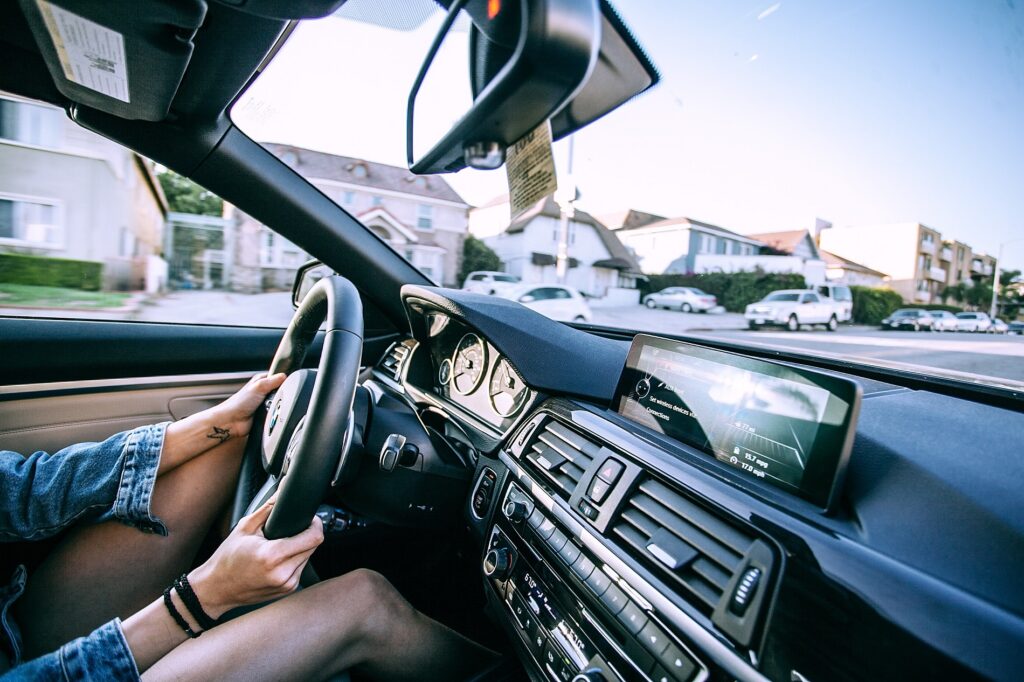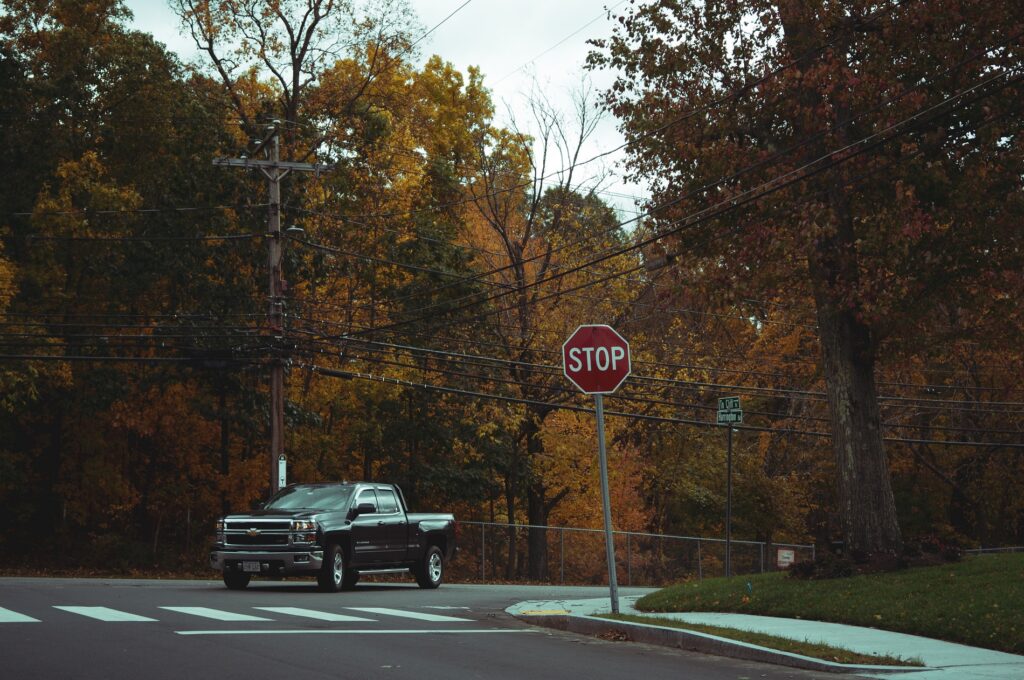Homeowner associations (HOAs) are organized groups that manage a residential community’s common areas and amenities. HOA communities typically have rules and regulations in place to ensure the safety and well-being of residents. This often includes regulating traffic flow and enforcement within the community. To enforce traffic rules, HOAs may issue citations or fines, hire off-duty police officers, or work with local law enforcement.

HOA & Community
Education and outreach are the best way to ensure compliance with HOA traffic regulations. HOA leaders should ensure that all residents know the rules and regulations regarding traffic flow in the community. HOA leaders should also encourage residents to report any dangerous or illegal driving behavior to the HOA or law enforcement.
The HOA should educate those homeowners through their website, newsletter, emails, flyers, or letters and continue to do so with reminders and updates on changes within the community.
By working together, HOAs and residents can help make their communities safer for everyone.
HOA & Traffic Violators
Traffic violations should be treated like any other HOA violation within an HOA. The offender technically did not commit any city or state crimes or violate any laws. Instead, they violated the governing documents of the association.
An HOA can adopt rules regarding traffic violations to include fines, but it must be included in their governing documents.
HOA & Speeding
One of the most common traffic violations that happen in neighborhoods is speeding. Life, in general, is always “go, go, go,” and when people leave their homes, sometimes they’re distracted by that “go” mentality that they’re in a rush. As a result, we constantly see accidents on the road directly related to speeding. Nationally, 26% of all traffic fatalities are speeding-related, and 87% of speeding-related fatalities occur on non-interstate roadways, including roads through neighborhoods1.
When an association tries to enforce speed limits, they have a few options. Many associations will set speed limits, speed bumps, or rumbles. Additionally, HOA’s can assign a monetary fine to the driver or take them to court if caught speeding or driving recklessly.
So, HOA’s can set up fines for those who speed within a community. HOA boards will always seek out ways to discourage speeding inside the community.
Speeding is a serious problem that can cause accidents, harm, or damage to the community, so they have the authority to fine homeowners for speeding on private roads. With that said, the HOA must make the speed limit known to all community members, and it needs to be a realistic speed.
Additionally, all this is dependent on the resources available and what’s included in the HOA’s governing documents. Some communities believe that traffic tickets may be too aggressive or may not include traffic tickets or fines as part of their governing documents.
When it comes to ticketing drivers, the HOA also needs to be careful not to overstep its boundaries with law enforcement and avoid escalating situations with the community. Again, it all comes down to safety, and fortunately, there are several ways to keep speeding (and other traffic violations) to a minimum that don’t require tickets.
Here are three ways to help reduce speeding within your community:
Speed Limit Signs & Speed Bumps
HOA’s can start by posting speed limit signs. There are a few reasons this helps:
- If homeowners don’t know the speed limit, they’re more likely to violate it.
- Speed limit signs are a kind reminder to drivers that they’re not on the main road yet and they’re still within a community.
- If the signs include verbiage like “Pedestrians Crossing,” “Children at Play,” etc., it’s a reminder of the risks of speeding.
Of course, this is not the only solution, but it is one way to prevent it. Speed limit signs also alert guests in your neighborhood of the speed limit.

If you choose to post speed limit signs, we recommend ensuring you’re using the correct and standard signage. In the case of a traffic violation, law enforcement may want to assist, but they’re prevented from helping when the signage isn’t correct.
Additionally, communities can prevent speeding by using speed bumps, rumbles, and humps. Make a note of the problem areas within your community. Is there a turn with a blind spot? Are there roads with a lot of hills?
If you choose to install speed bumps, work with a civil engineer to identify where they should go. Furthermore, if you opt for speed bumps or rumbles, work with your local governing agency to obtain written permission, as there are often engineering considerations.
Keep in mind: If your speed bumps aren’t designed properly, this can impact fire trucks and EMT vehicles by slowing down their response time. Other objections with speed bumps and rumbles are wear and tear on a car and issues with snow removal.
Speed Cameras & Speed Radars
Speed cameras and speed radars are helpful but more expensive options. These can be installed in thoughtful locations to capture license plates and record the driver’s speed. Then, the HOA can move forward by sending a warning notice or imposing a fine.
While this is a great option, look into your state’s laws on acquiring information like license plate and license information.
If speeding is a serious issue, and you’re looking to get law enforcement involved, the camera footage and radars are helpful to show the board, gain support with law enforcement, and request change.
Outsource Patroling
Specific communities may have residents working as traffic patrols to observe and record violations. However, there is a certain amount of risk that those residents and the community can take on, so an alternative would be to work with a private security firm to observe and report violations.
Several companies offer traffic enforcement services for planned and gated communities. These companies cannot issue tickets, but they can recognize and record speeding cars, monitor roadways and report violators to the board.
HOA & Law Enforcement
HOA’s can partner with local law enforcement if more aggressive measures need to be taken. While law enforcement has jurisdiction over public roads, there are a few ways they can help with private roads. For example, they can perform periodic patrols, issue speeding tickets, and even provide a police car presence.
A police presence may encourage speed limit adherence in your community, but there is only so much law enforcement can do in private neighborhoods.
Focus on alternatives to prevent speeding before you start punishing your community. Things like speed bumps, stop signs, speed limit signs, and speed indicators can really make a difference in community safety.

These alternatives are also a reminder that road safety is a community responsibility, and we all have an essential role to play in our safety and the safety of others.
Is your community struggling with speeding and other traffic violations? Consider hiring a professional HOA management company like AMC Inc. (Association Management Concepts). We’ll work with you to identify ways to keep your community safe, even if you’re a self-managed association. Contact us at 916-565-8080 ext. 321.
Sources:
1 Statistics on Speeding in "The Dangers of Speeding Through Neighborhoods."





